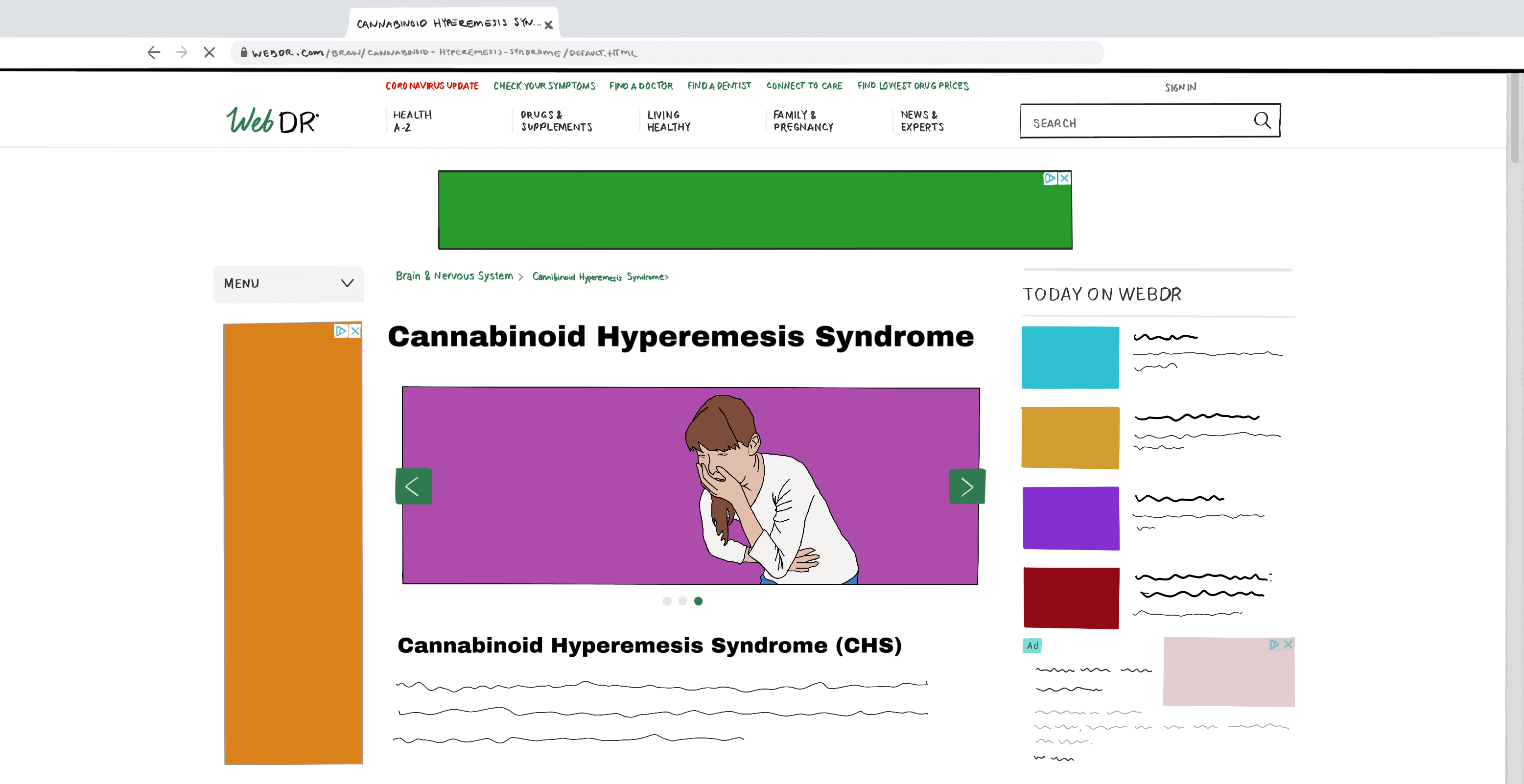
Smoking marijuana frequently can endure harsh side effects on one’s body and health. On average, 2.7 million individuals are affected by cannabinoid hyperemesis syndrome in a year.
“Cannabinoid hyperemesis syndrome is a well-defined disease that’s associated with prolonged use of marijuana and can cause nausea and vomiting. [It] can be solved or treated by simply stopping the use of cannabinoid,” Marvin Lu, a Medical House staff member at Emory University’s School of Medicine, said.
Though this disorder is rare, it still affects those who use marijuana frequently, including daily or weekly usage. It can affect the user whether they are smoking the drug, consuming the drug, or any form of intake of marijuana with tetrahydrocannabinol present. However, doctors are more likely to find the condition in daily marijuana users.
In 2004, the journal Gut first described the illness. To date, it has only caused two deaths.
Symptoms of CHS are nausea, vomiting, cramping and stomach pain. Some patients find themselves suffering from these symptoms for one to two days, while others suffer for a week or more.
“The main symptom is that you are vomiting a lot and that you can attribute the cause to the use of cannabis or drugs containing cannabinoids. Otherwise, we don’t actually know a whole lot about it,” Chris Goode, the director of undergraduate studies in Georgia State’s psychology department, said.
Treatments for this disorder include halting the use of marijuana entirely and bathing. Patients have found that taking a hot bath or shower can suppress some of this disorder’s symptoms.
“Another thing, which is really interesting, is a topical application of capsaicin, the chemical in spicy food that gives you the spicy flavor. It activates pain receptors, [and] it interferes with the bodily system called the hypothalamus-pituitary-adrenal axis. This is part of the body’s stress response,” Goode said.
The initial stage of CHS is dehydration. Patients will find themselves drinking large quantities of water, which does little to quench their thirst. In some cases, patients find themselves appearing flushed and very anxious. Most patients do not receive a diagnosis during this stage of the syndrome.
The second stage of the syndrome is when patients start to feel profusely nauseated, in which they get to the point of profusely vomiting, some patients not being able to keep down anything they eat or drink. Patients also notice their bodies feeling very weak due to the profuse vomiting where they are losing electrolytes in their bodies and become severely dehydrated.
At this point, most patients visit the hospital and a doctor diagnoses them with CHS. It is rare for patients to visit the hospital during the initial stage of the syndrome as they don’t overthink their symptoms.
Around 60% of patients experience their symptoms going away in one to two days, but 30% of patients experience prolonged symptoms up to a month. Stopping the use of marijuana in 60% of patients has shown that the symptoms stop. Any product containing THC can contribute to cannabinoid hyperemesis syndrome.
The use of marijuana after the recovery phase of CHS can cause a relapse in the illness. The symptoms can come back upon the intake of products containing THC. For patients to recover completely and avoid relapsing back into this illness, professionals advise them to halt the use of marijuana products containing THC.
Younger populations find this syndrome more prevalent in their age groups because of the demographic of individuals who use marijuana since people aged 18-25 have the highest prevalence of marijuana use.
“There have been studies that show there is a genetic predisposition to some patients, but it doesn’t have anything to do with age. Both older and younger populations are affected the same,” Lu said.
One of the most prominent diseases comparable to CHS is cyclic vomiting syndrome, where patients suffer from repeated nausea and vomiting episodes. Many patients with cyclic vomiting syndrome, which a psychiatrist usually diagnoses, also use marijuana. Because of their similarities, doctors can find it difficult to diagnose the patient properly.
Lu noted that to decrease the number of CHS cases, it is important that marijuana users are away from it.
“It’s important to recognize that such an entity exists. We do treat some forms of vomiting with marijuana. Patients who have AIDS, cancer-related vomiting actually use marijuana as a form of therapy for them, but it is short-term therapy. It is not prolonged marijuana use,” Lu said.
Though marijuana can be beneficial for treating some illnesses and disorders, overuse of marijuana can damage one’s health.
If one starts experiencing the initial symptoms of CHS, abstains from marijuana and symptoms persist after one or two days, they should seek medical assistance. Reaching the second stage calls for immediate medical attention.
For non-emergency medical concerns, students can reach the Student Health Clinic at 404-413-1930, or students can make an appointment with the clinic through the Patient Portal.
